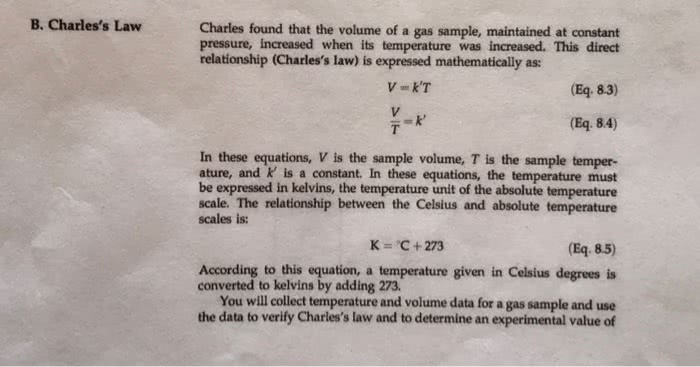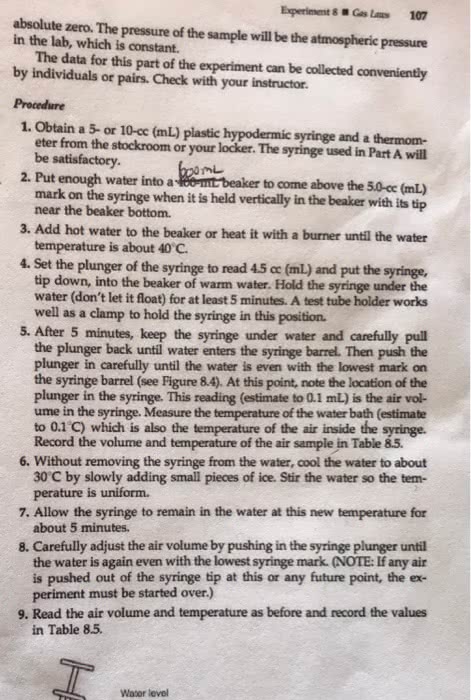CHEM1003 Lecture Notes - Lecture 26: Gas Constant, Ideal Gas Law, Specific Volume

Lecture 26
Sunday, 15 May 2016
12:28 pm
Gases (2)
Gas Law 2 - Charles' Law:
• The relationship between temperature of a gas and its volume
• Volume of a gas increased as temperature increased and it is a linear
relationship
• P and n remain constant
• Volume and temperature (in Kelvin) are directly related
• V = bT (b is a proportionally constant)
• K = oC + 273
•
Example:
• Suppose a balloon containing 1.3L of air at 24.7oC is placed into a beaker
containing liquid nitrogen at -78.5oC. What will the volume of the sample of air
become (at constant pressure)
• V1/T1 = V2/T2
• T1 = 24.7 + 273 = 297.7 K
• T2 = -78.5 + 273 = 194.5 K
• 1.3/297.7 = V2/194.5
• 1.3/297.7 x 194.5 = 0.8493 L
Avogadro's Law:
• Volume and number of moles are directly related
• T and P are constnat
• V = an (a is a proportionality constant)
•
• This constant is the same for all gases at a given temperature and pressure
• Avogadro's Law is true of all gases, independent of their makeup
• Any gas that has a volume of 1L, pressure of 1atm and 0oC will have the same
number of molecules and same number of moles
Example:
• If 2.45 mol of argon gas occupies a volume of 89.0, what volume will 2.10 mol
of argon occupy under the same conditions of temperature and pressure
• V1/n1 = V2/n2
find more resources at oneclass.com
find more resources at oneclass.com
Document Summary
Example: suppose a balloon containing 1. 3l of air at 24. 7oc is placed into a beaker containing liquid nitrogen at -78. 5oc. The ideal gas law: we can bring all of these laws together into one comprehensive law, v = bt, v = an, v = k/p, pv = nrt, where r = 0. 08206 l. atm/mol. k, the universal gas constant) The gas constant, r: the value of r depends on the units of p, t and v, a common form is r = 0. 08206 l atm/mol k, r = pv/nt = (1atm)(22. 4l)/(1. 00mol)(273k) = 0. 08206. Example: an automobile tire at 23oc with an internal volume of 25. 0l is filled with air to a total pressure of 3. 18 atm. Determine the number of moles of air in the tire: p = 3. 18 atm, v = 25. 0l, t = 23 + 273 = 296k, n = , r = 0. 08206, n = pv/rt = 3. 18x25/0. 08206x296 = 3. 27 moles.






